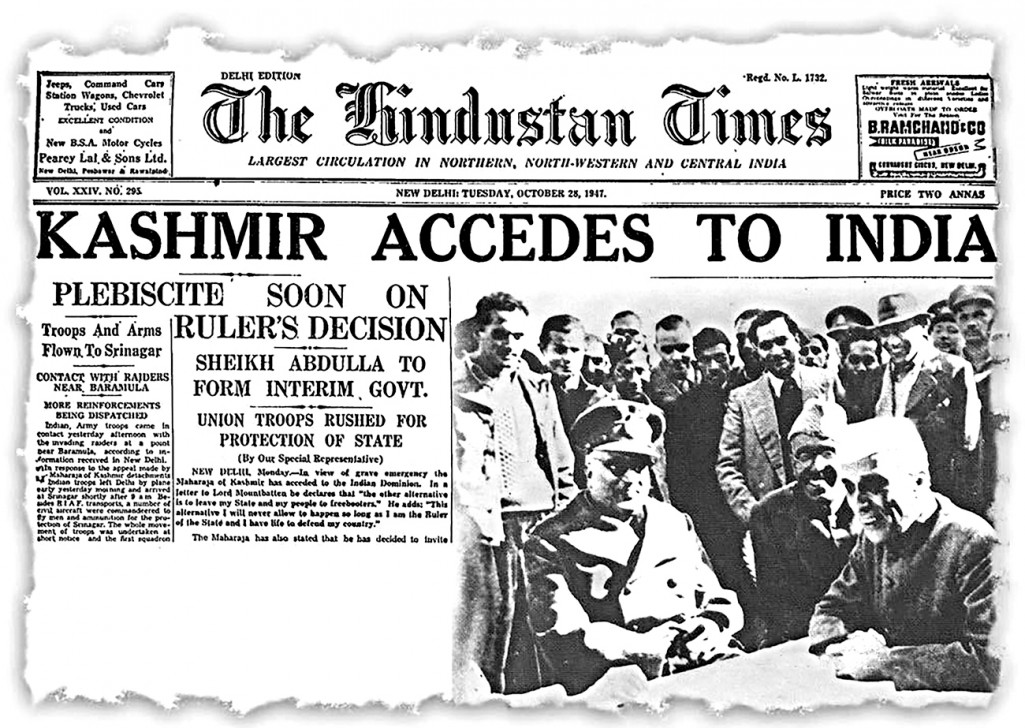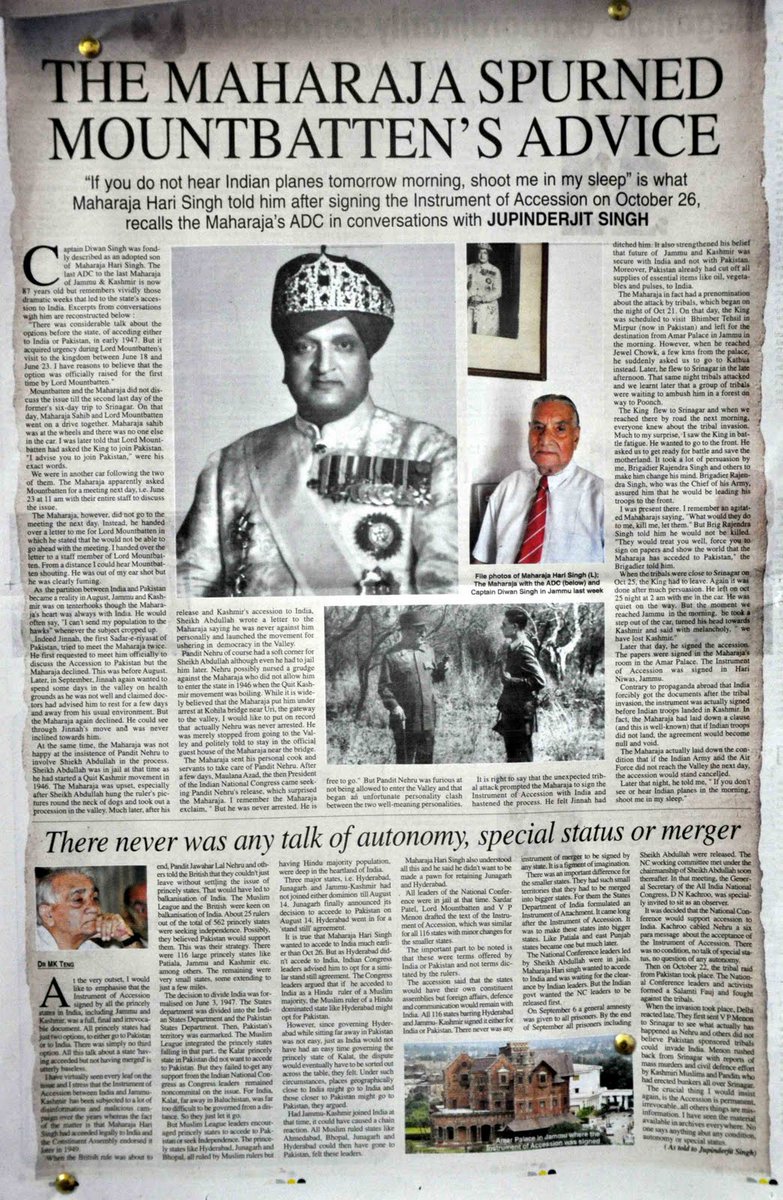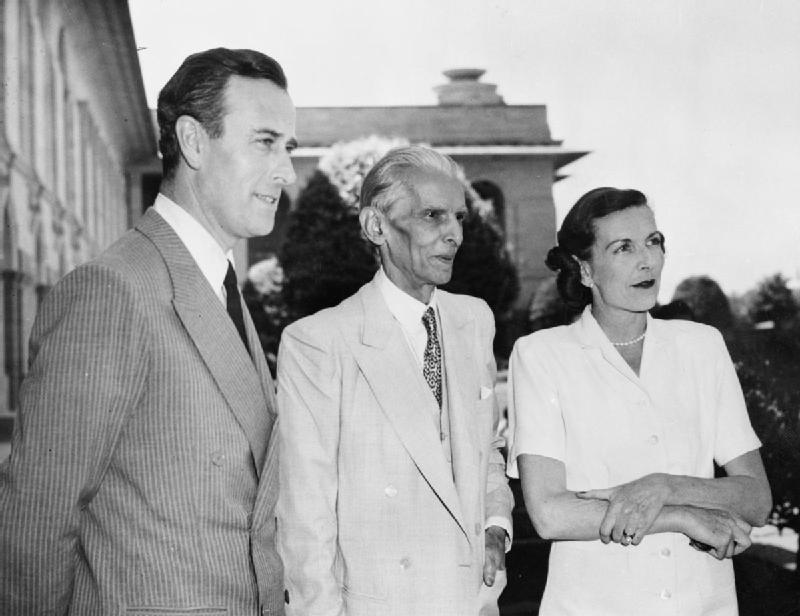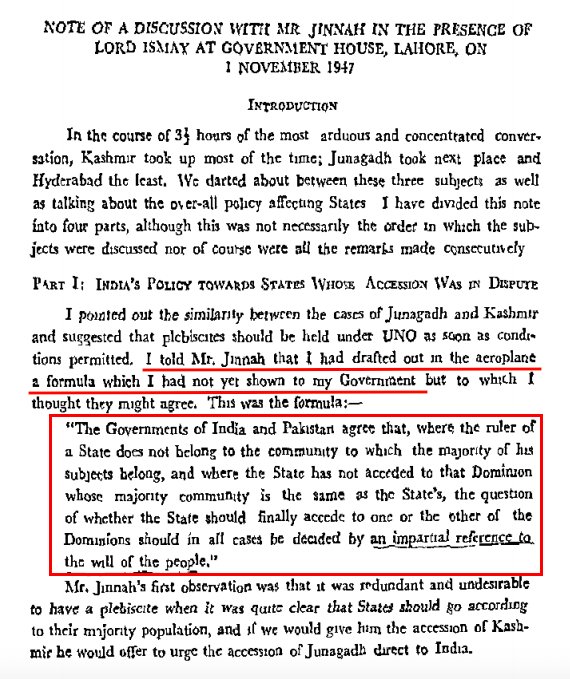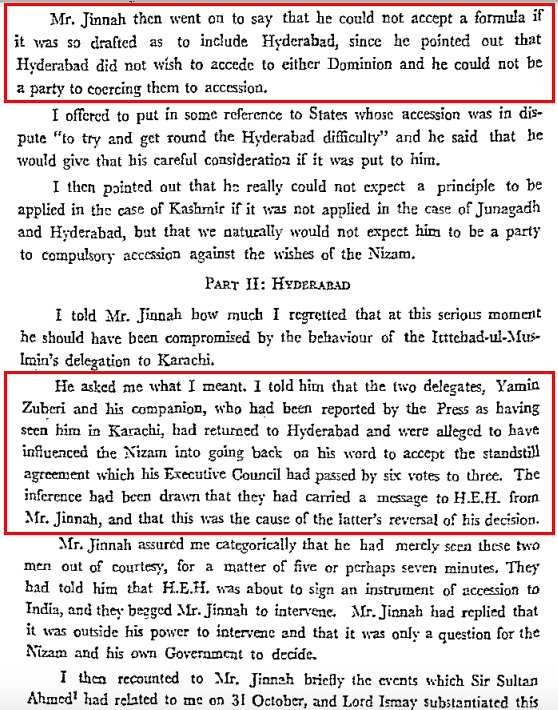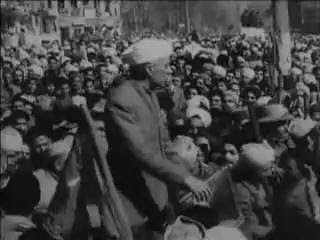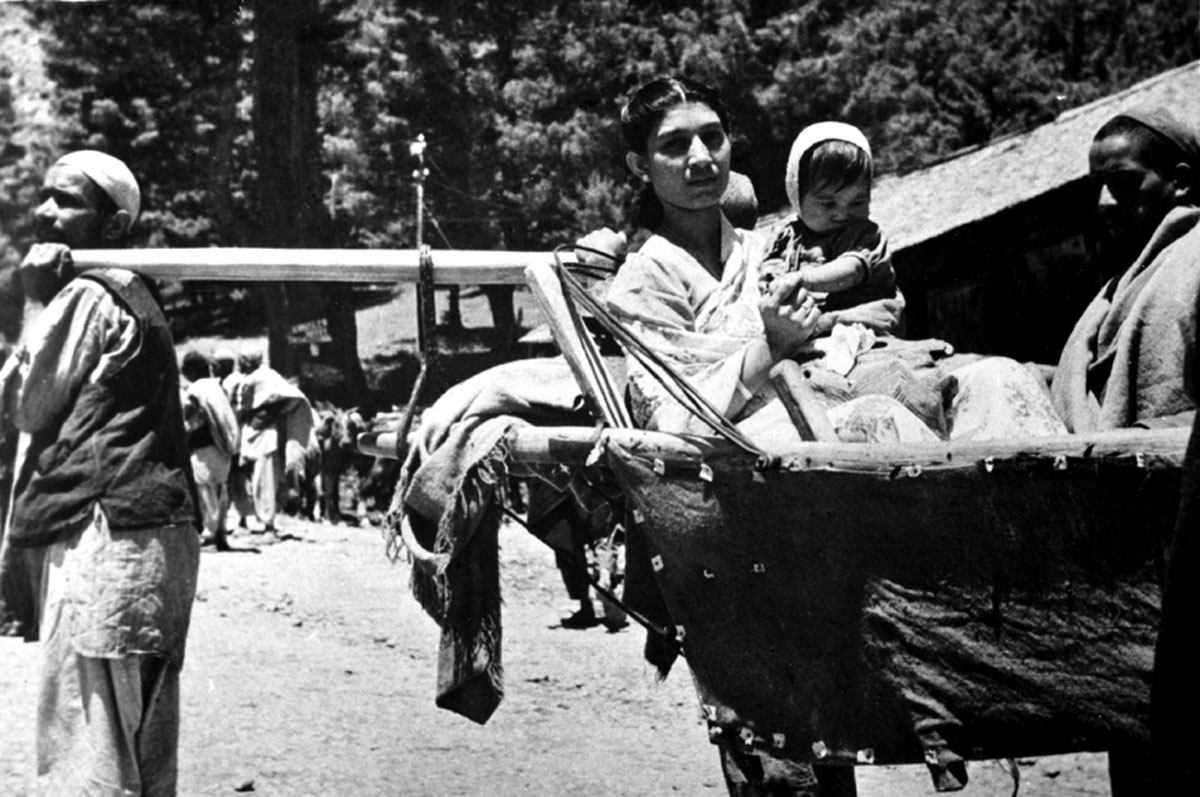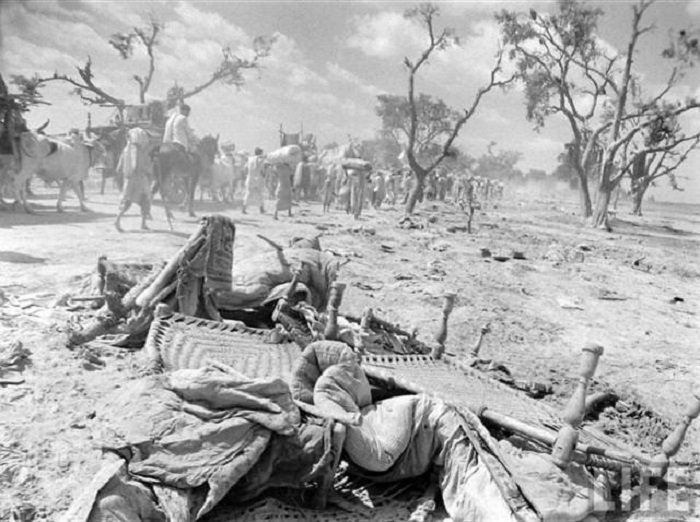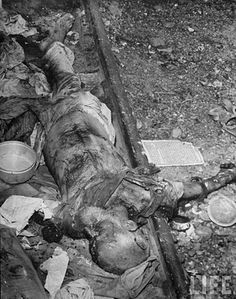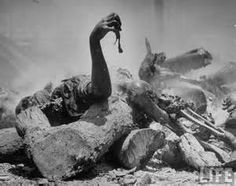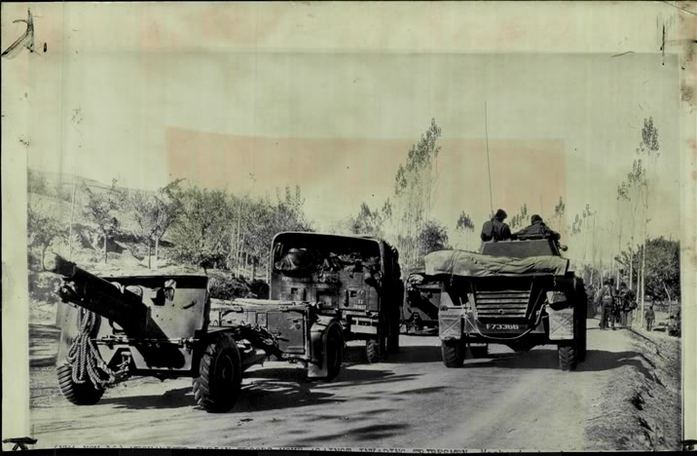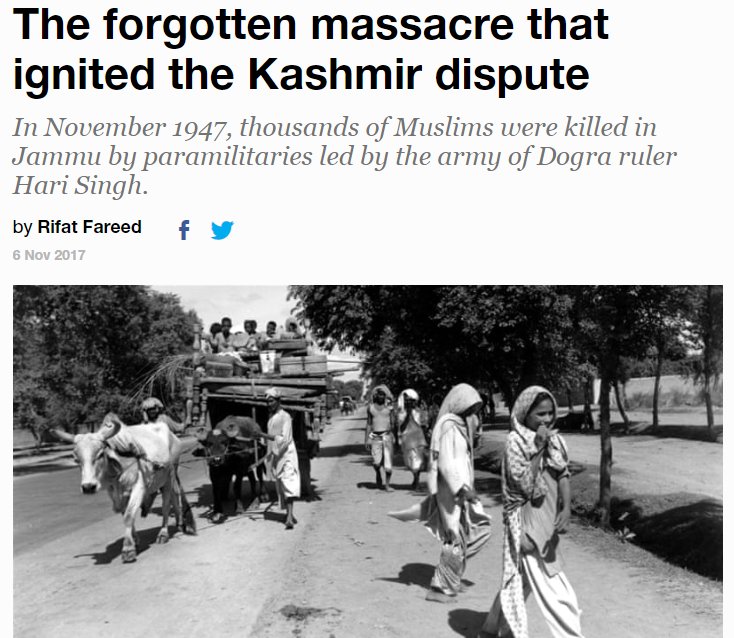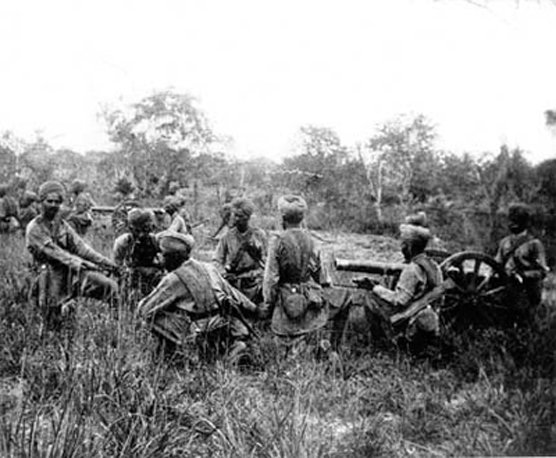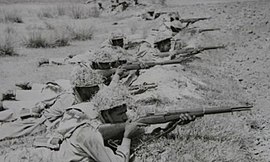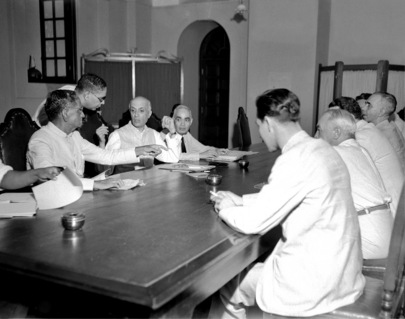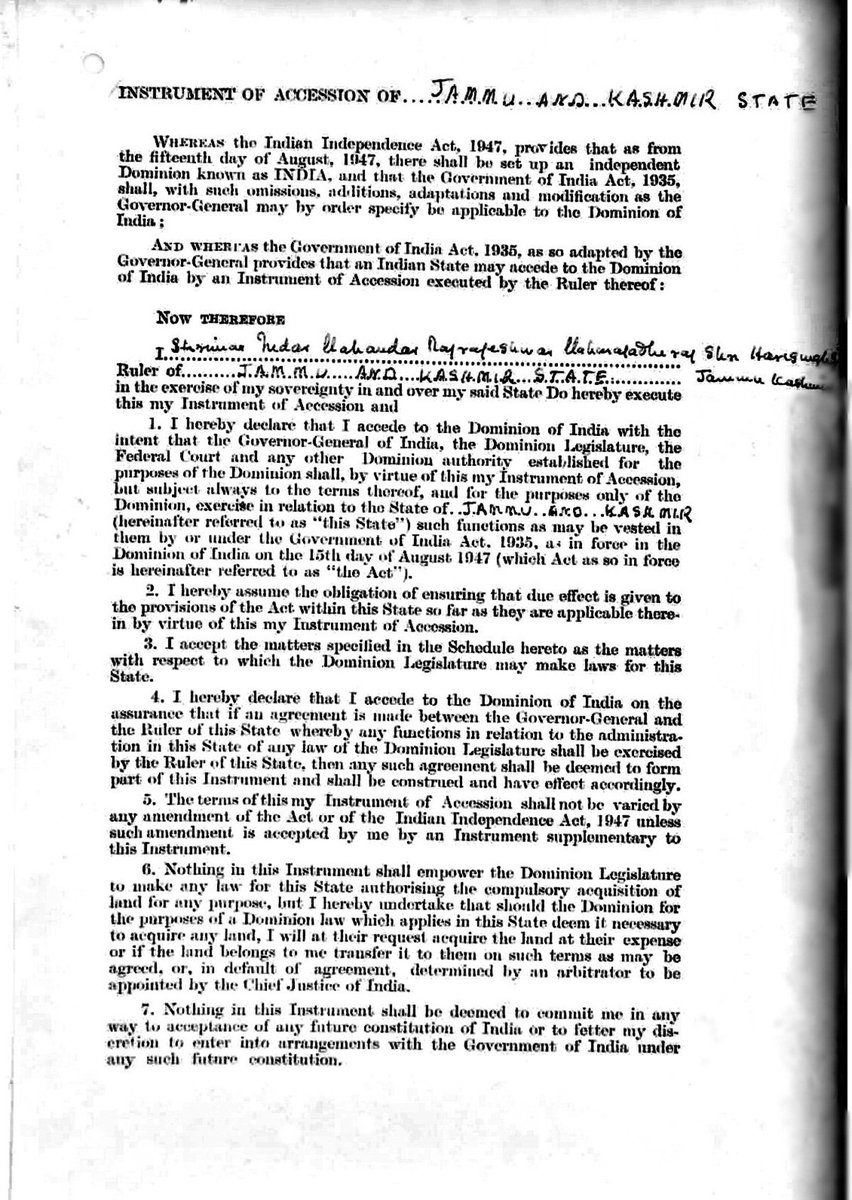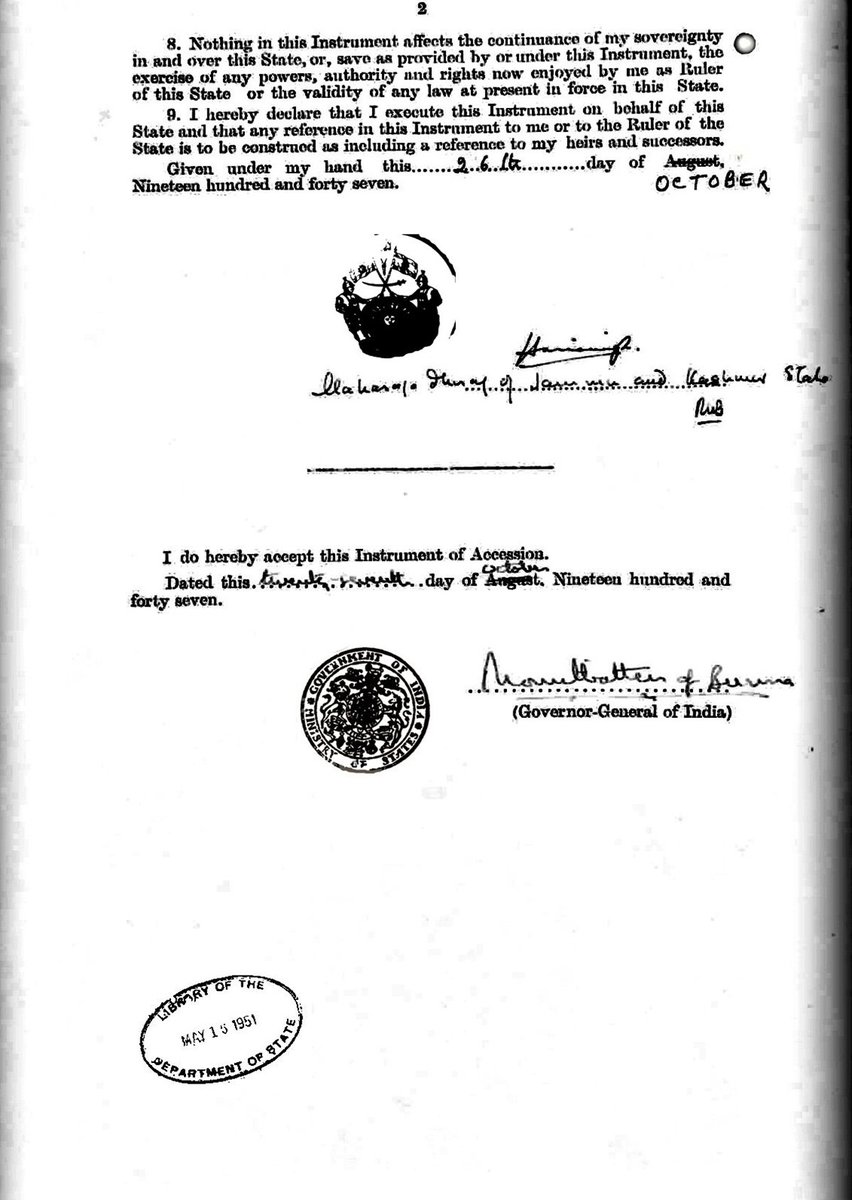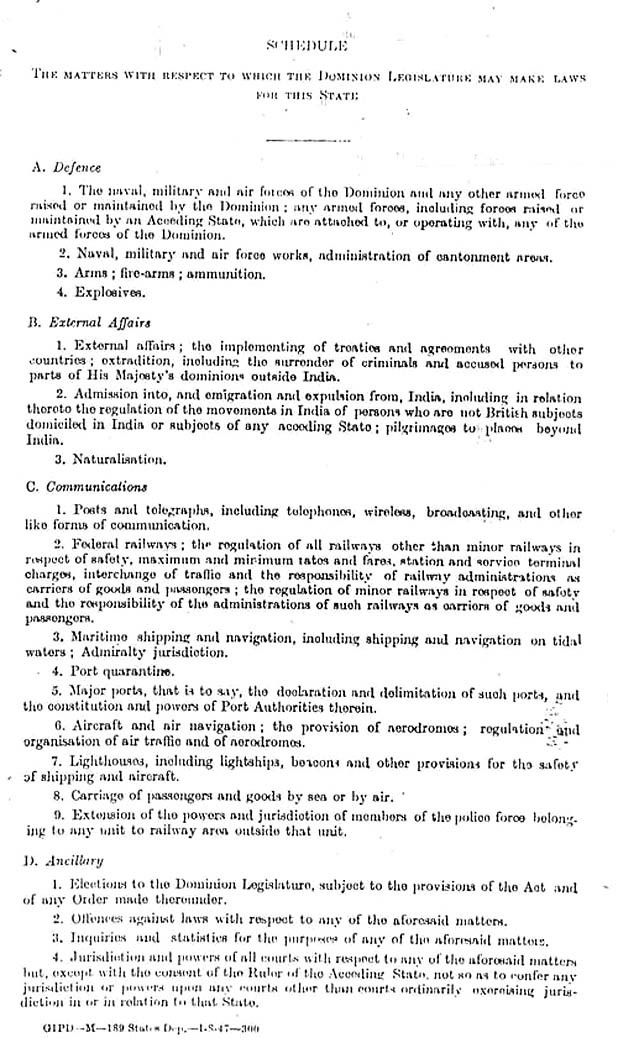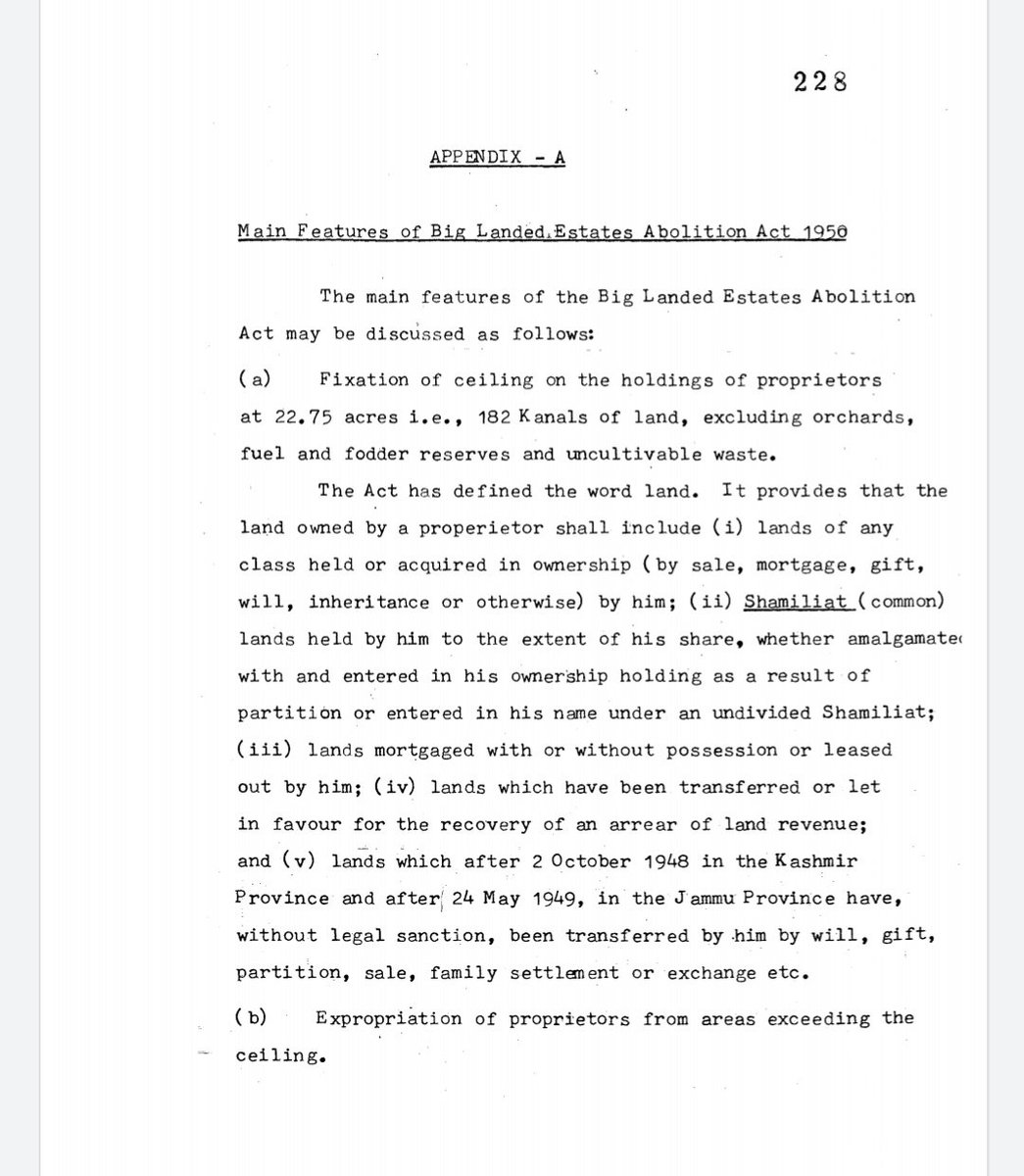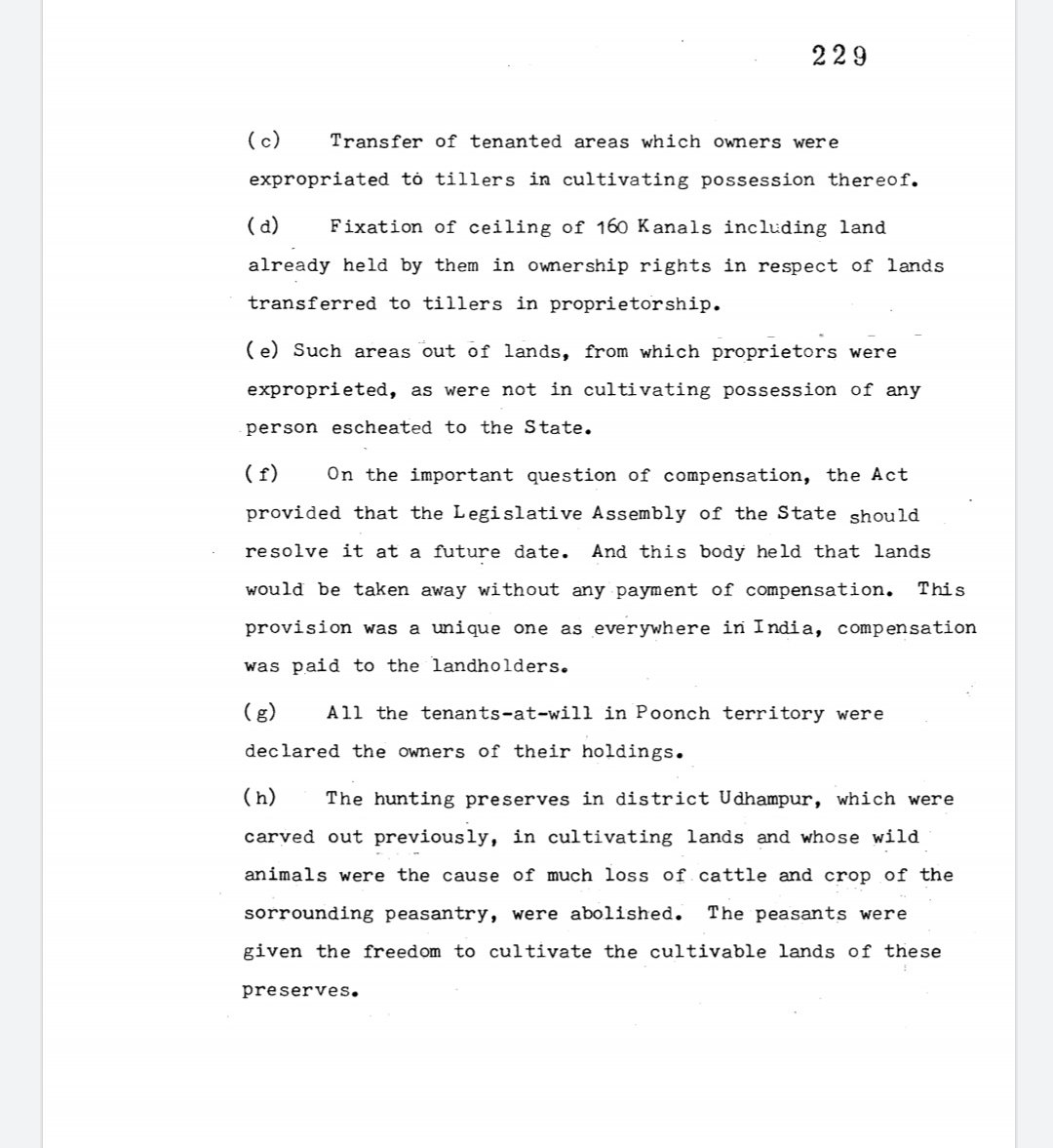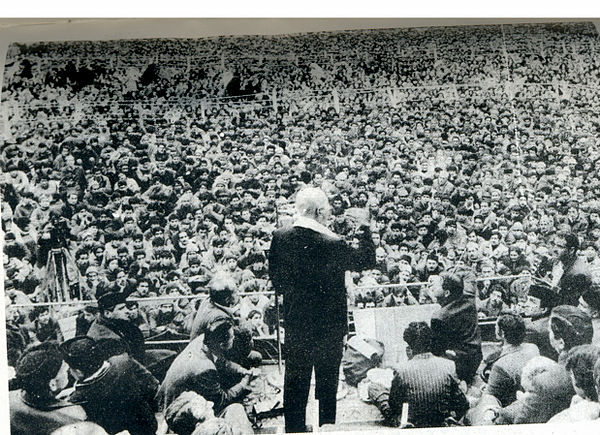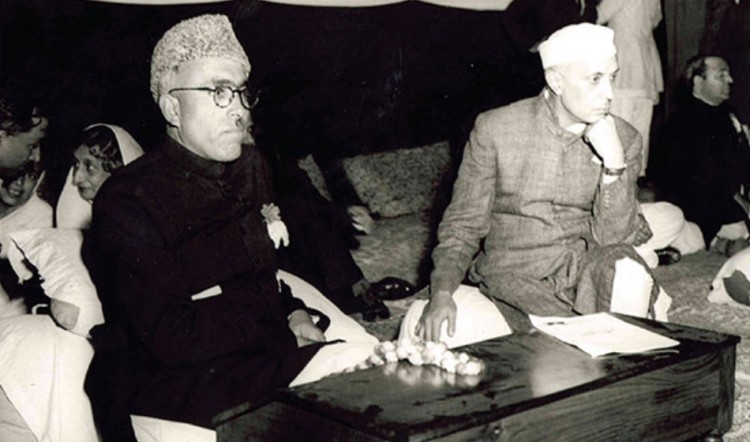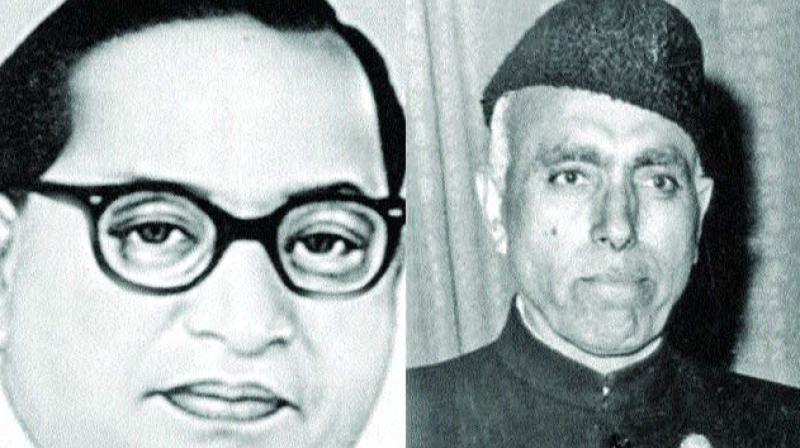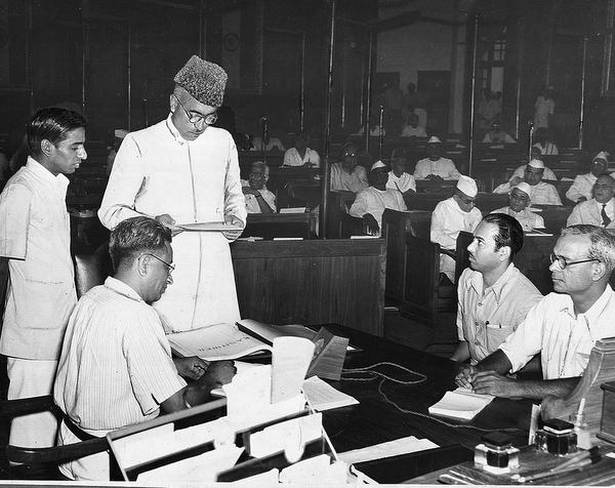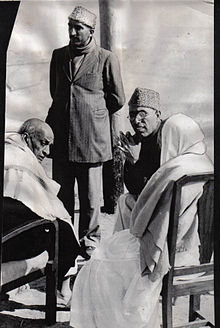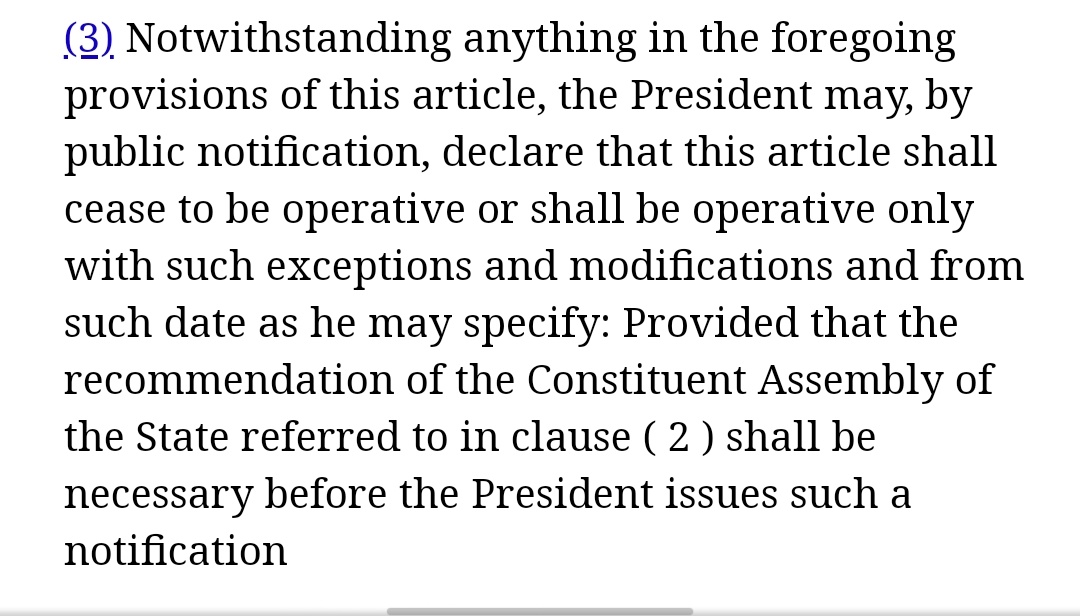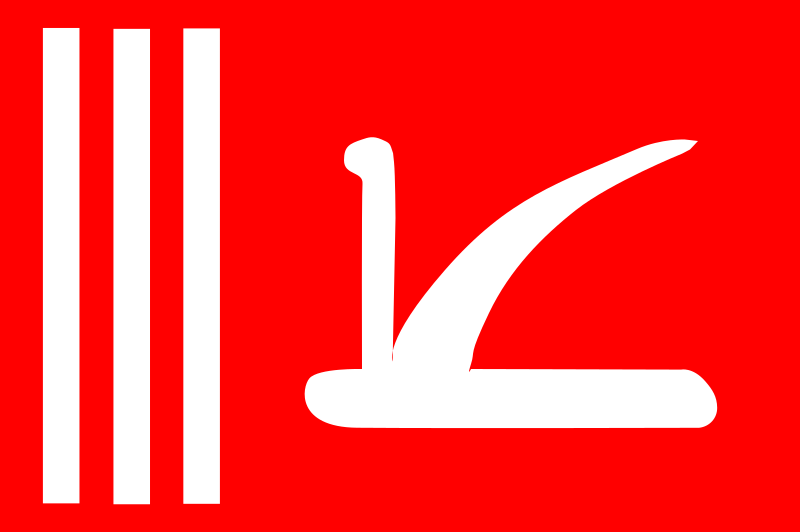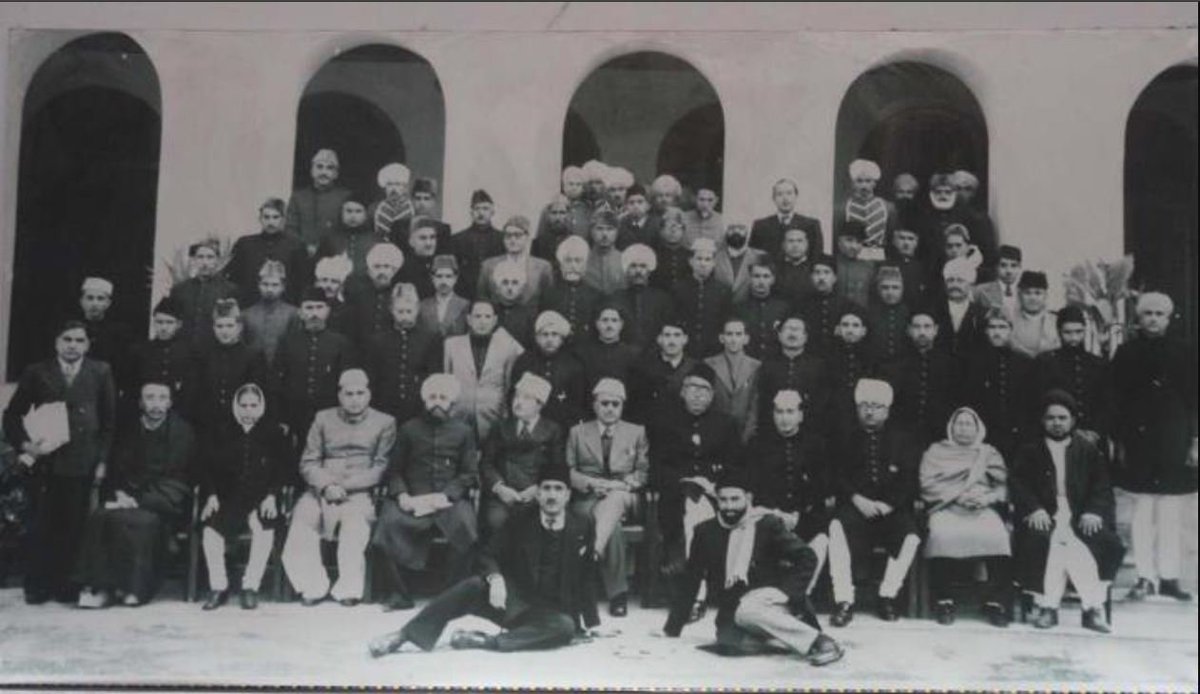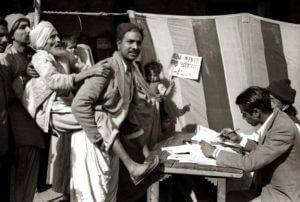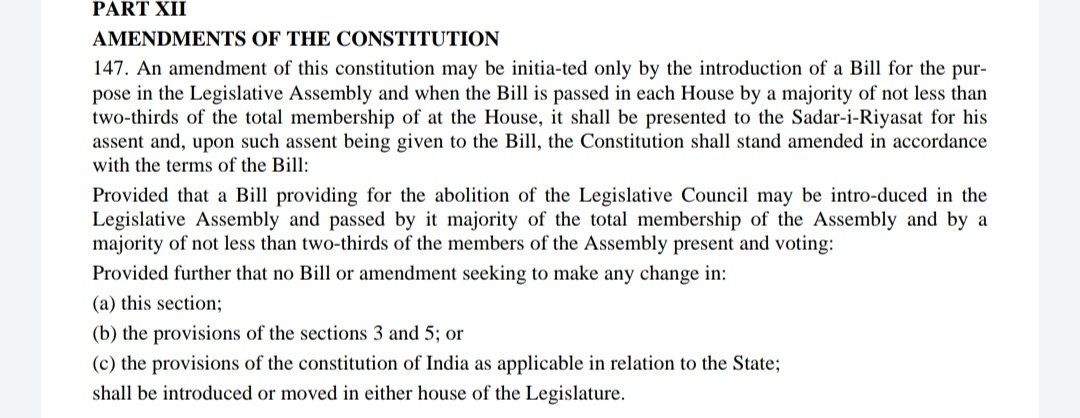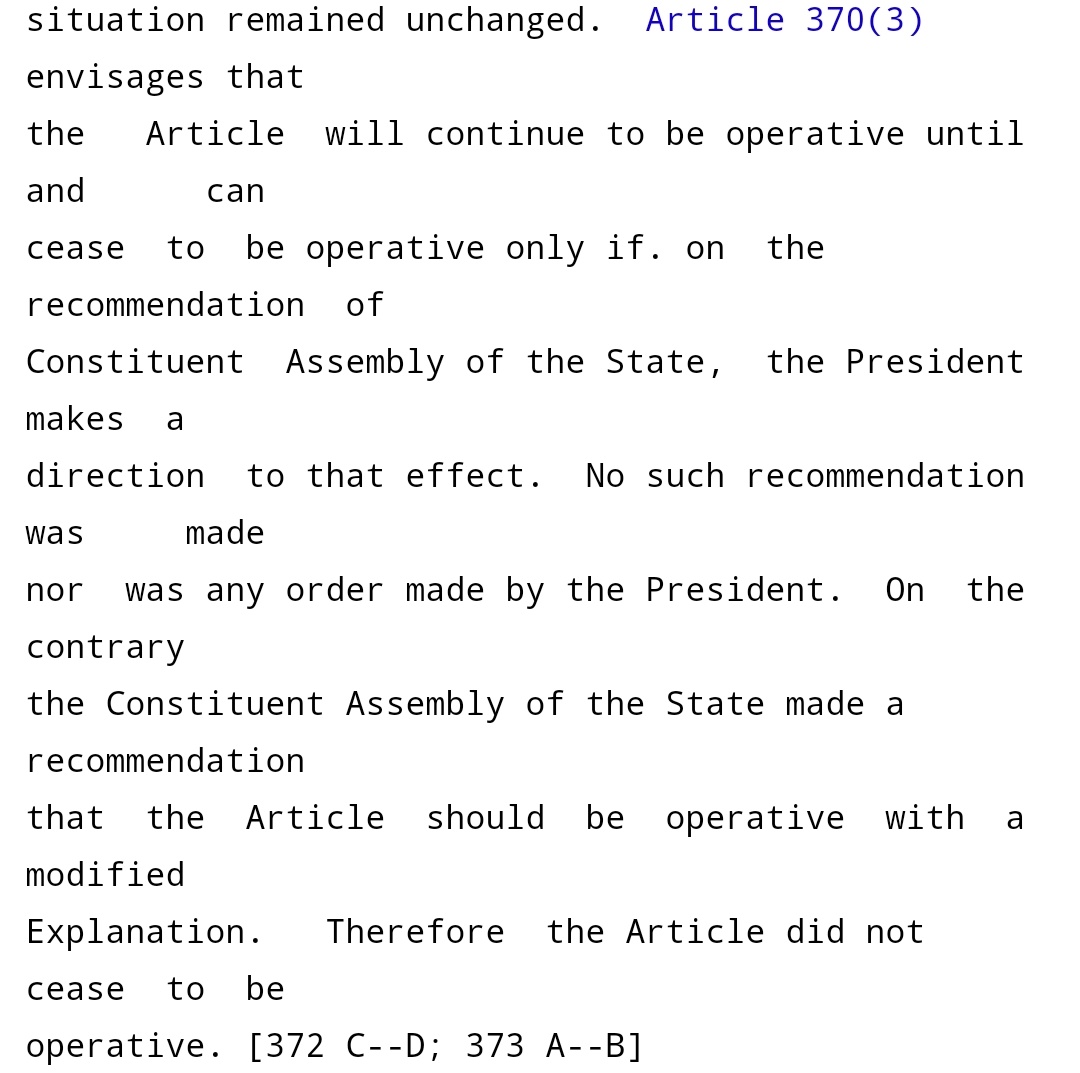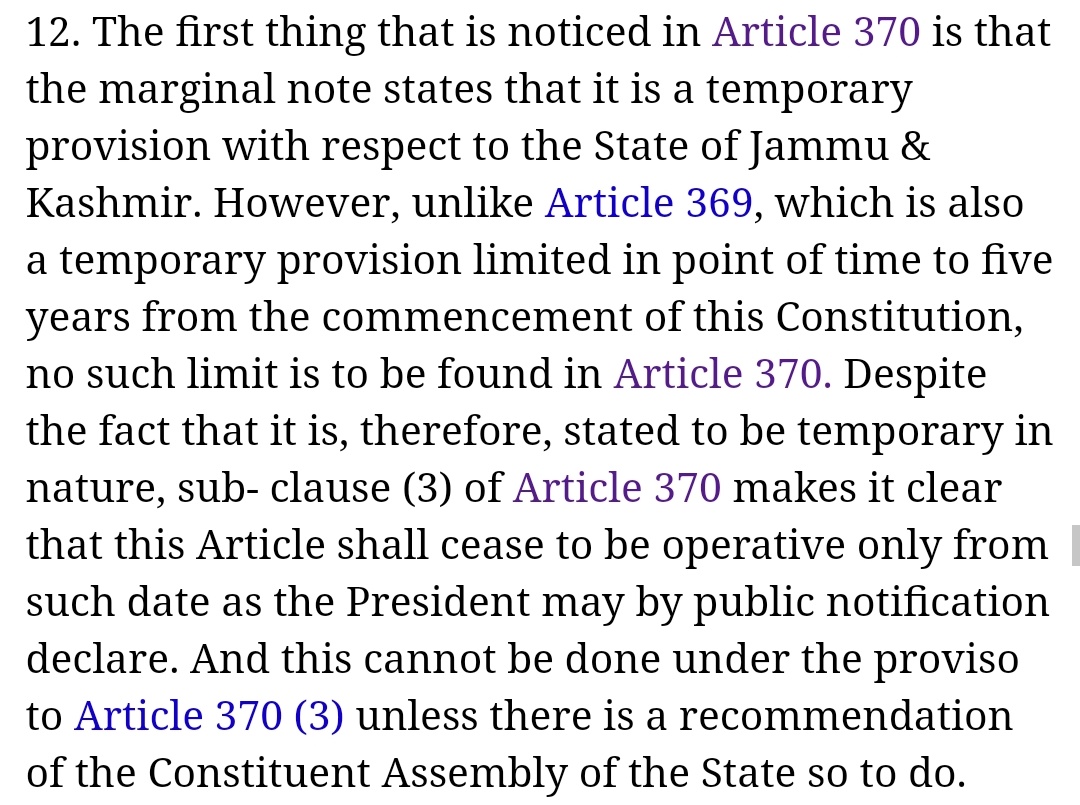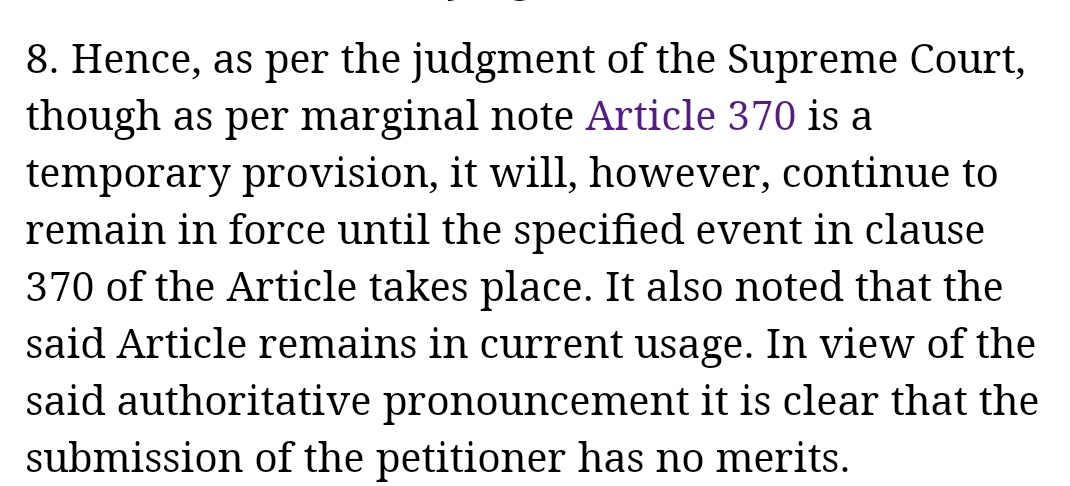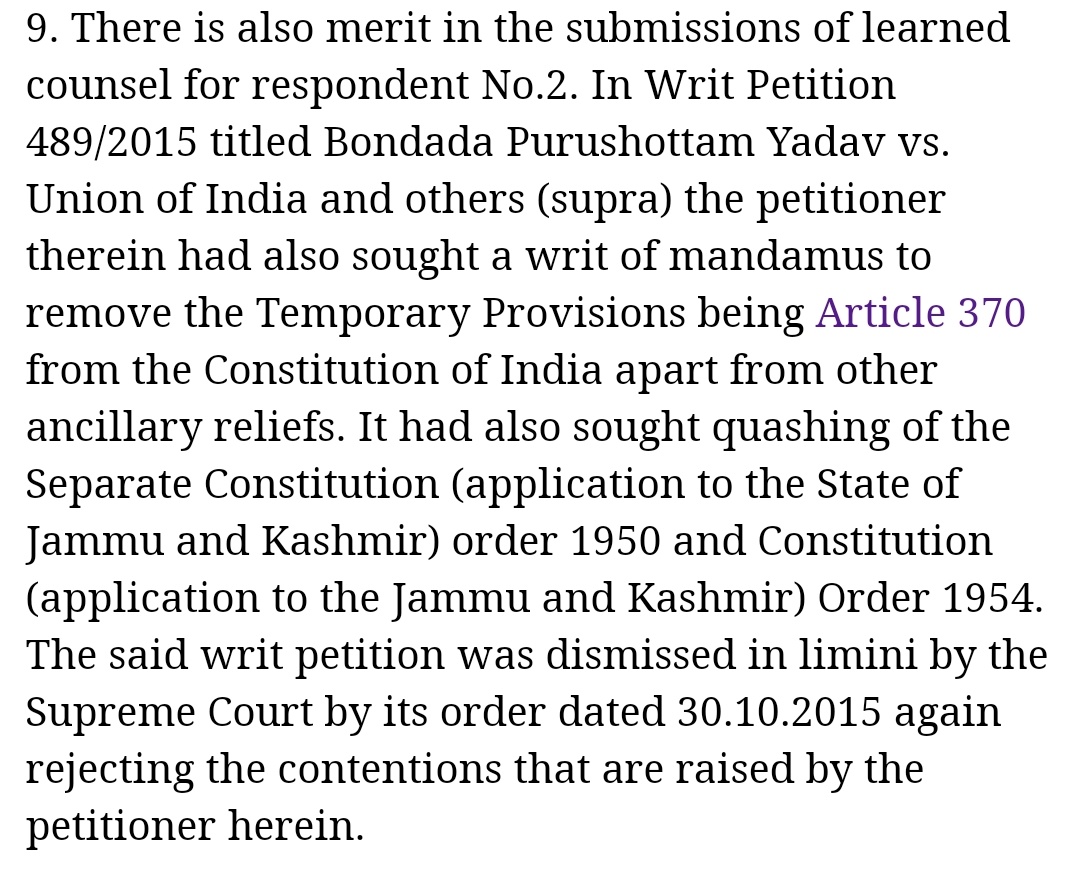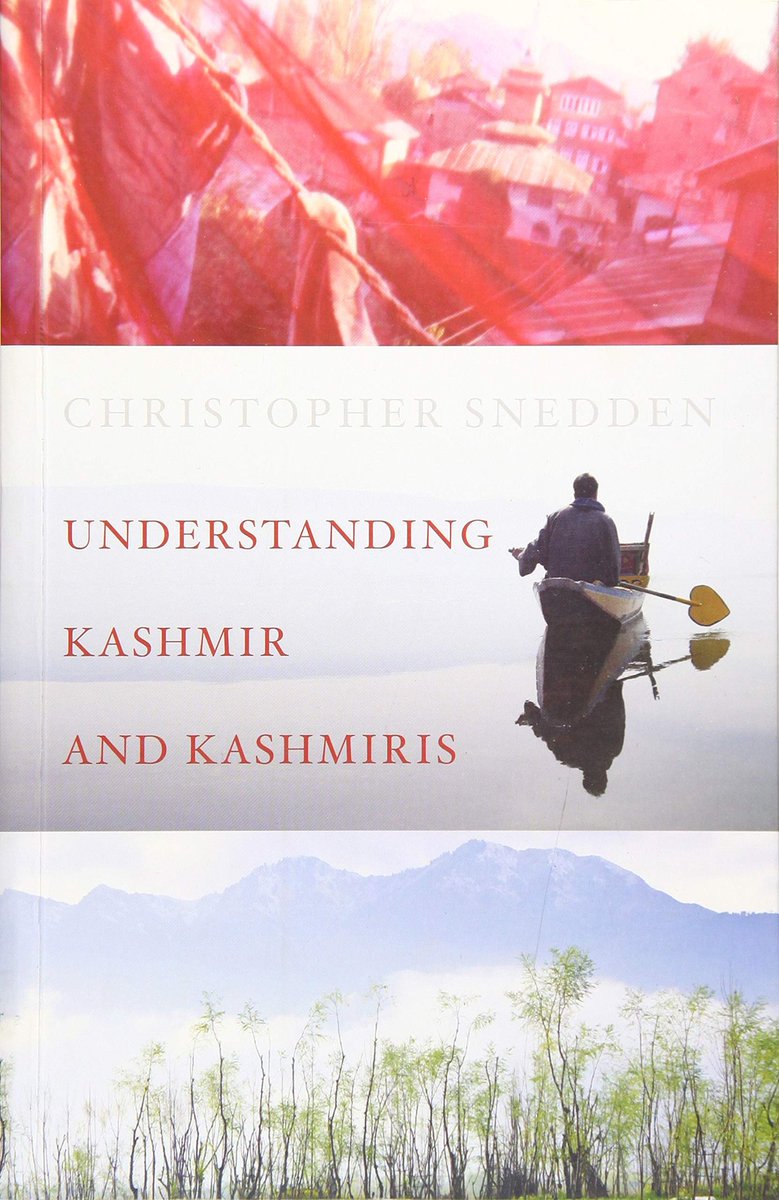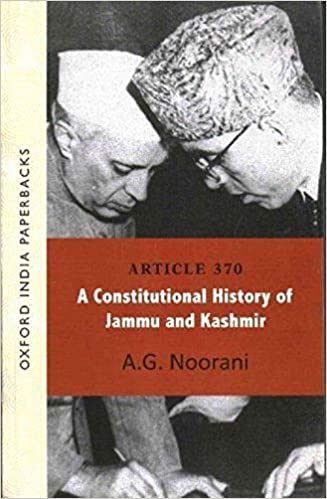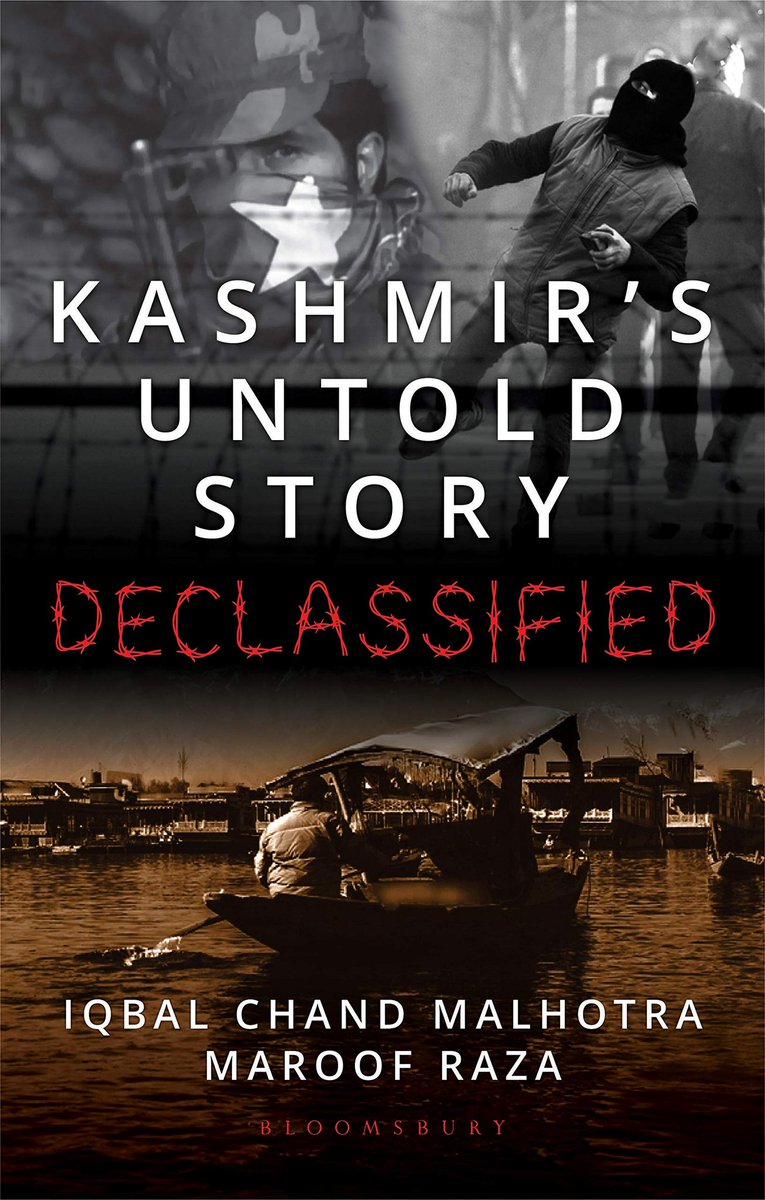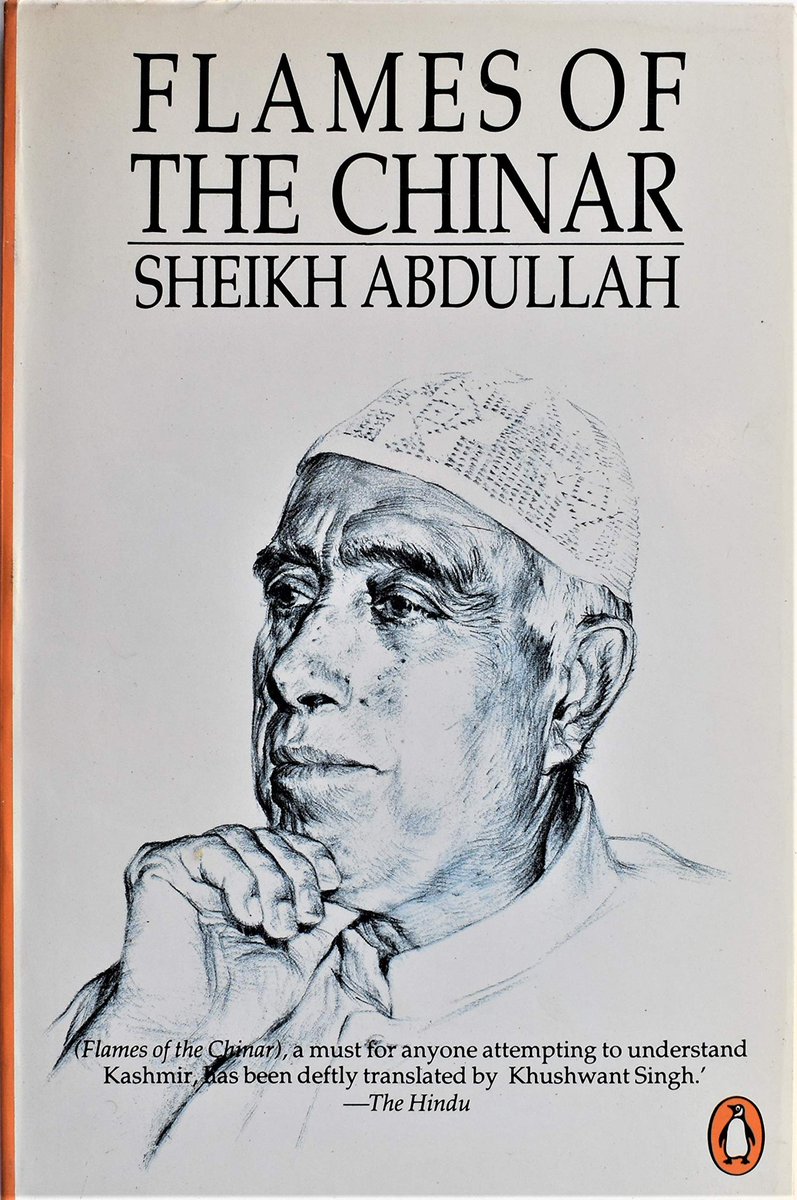97/162
The very next day the Maharaja signed the Instrument of Accession formally ceding his territories to India. It was Oct 26, 2947.
Still anxious about the Indian forces& #39; timeliness he called his ADC Capt. Deewan Singh.
The very next day the Maharaja signed the Instrument of Accession formally ceding his territories to India. It was Oct 26, 2947.
Still anxious about the Indian forces& #39; timeliness he called his ADC Capt. Deewan Singh.
98/162
Handing him a handgun he ordered, "If you don& #39;t hear Indian airplanes in the morning, shoot me in my sleep."
Luckily, it never came to that as the Indian armed forces mobilized well before daybreak and managed to secure Srinagar within hours of touchdown.
Handing him a handgun he ordered, "If you don& #39;t hear Indian airplanes in the morning, shoot me in my sleep."
Luckily, it never came to that as the Indian armed forces mobilized well before daybreak and managed to secure Srinagar within hours of touchdown.
99/162
This irked Jinnah who deemed the whole accession fraudulent and ordered a formal invasion of India. Funnily enough, had Hari Singh capitulated to the invaders and acceded to Pakistan, Nehru would& #39;ve said the same about the accession. It was never gonna be fair.
This irked Jinnah who deemed the whole accession fraudulent and ordered a formal invasion of India. Funnily enough, had Hari Singh capitulated to the invaders and acceded to Pakistan, Nehru would& #39;ve said the same about the accession. It was never gonna be fair.
100/162
But remember Sir Claude, the Supreme Commander of British forces in India and Pakistan? Invading India on Jinnah& #39;s orders meant pitting his own men against each other, a rather absurd preposition. So he refused.
Stalemate.
But remember Sir Claude, the Supreme Commander of British forces in India and Pakistan? Invading India on Jinnah& #39;s orders meant pitting his own men against each other, a rather absurd preposition. So he refused.
Stalemate.
101/162
Nov 1, 1947, Mountbatten visited Lahore to meet with Jinnah on latter& #39;s invitation. This meet yielded nothing of substance although it was the first official summit on Kashmir between the 2 new nations. Here, Jinnah declined Mountbatten& #39;s offer of plebiscite in Kashmir.
Nov 1, 1947, Mountbatten visited Lahore to meet with Jinnah on latter& #39;s invitation. This meet yielded nothing of substance although it was the first official summit on Kashmir between the 2 new nations. Here, Jinnah declined Mountbatten& #39;s offer of plebiscite in Kashmir.
102/162
Jinnah and Mountbatten also disagreed on the process of demilitarization of Kashmir. The very next day, Nehru went on air with his assurance of a UN-supervised plebiscite in Kashmir once peace prevailed. This, of course, would never happen.
Jinnah and Mountbatten also disagreed on the process of demilitarization of Kashmir. The very next day, Nehru went on air with his assurance of a UN-supervised plebiscite in Kashmir once peace prevailed. This, of course, would never happen.
103/162
Nehru& #39;s assurance was not his own brainchild, it was Mountbatten& #39;s. But now it was out in public domain. At a time when Jinnah had summarily rejected any such suggestion. This would continue to create semantic problems between the 2 nations for generations to come.
Nehru& #39;s assurance was not his own brainchild, it was Mountbatten& #39;s. But now it was out in public domain. At a time when Jinnah had summarily rejected any such suggestion. This would continue to create semantic problems between the 2 nations for generations to come.
104/162
At this point before going any further, let& #39;s rewind a few months to better understand the precursors to the invasion that put Kashmir on the path to perpetual confusion.
Remember the anti-tax campaign in Poonch? The was one of the first dominoes.
At this point before going any further, let& #39;s rewind a few months to better understand the precursors to the invasion that put Kashmir on the path to perpetual confusion.
Remember the anti-tax campaign in Poonch? The was one of the first dominoes.
105/162
The build-up to India& #39;s partition witnessed unprecedented communal violence. Both Hindus and Muslims acted largely to skew their respective region& #39;s demographics in their favor. Practical because that would decide which side of the line they& #39;d end up on.
The build-up to India& #39;s partition witnessed unprecedented communal violence. Both Hindus and Muslims acted largely to skew their respective region& #39;s demographics in their favor. Practical because that would decide which side of the line they& #39;d end up on.
106/162
Starting March Hindu and Sikh refugees started pouring into Jammu from Rawalpindi and Sialkot. They brought with them horrifying tales of communal violence perpetrated by the Muslims. Rapes, murders, loot, the whole shebang. This was the second domino.
Starting March Hindu and Sikh refugees started pouring into Jammu from Rawalpindi and Sialkot. They brought with them horrifying tales of communal violence perpetrated by the Muslims. Rapes, murders, loot, the whole shebang. This was the second domino.
107/162
If the Poonch campaign disenchanted the Maharaja, the violence in Rawalpindi and Sialkot disenchanted the Hindus of Jammu. Remember, Muslims were already forbidden from bearing arms in J&K while no such restrictions applied to Hindus. This discrimination was by design.
If the Poonch campaign disenchanted the Maharaja, the violence in Rawalpindi and Sialkot disenchanted the Hindus of Jammu. Remember, Muslims were already forbidden from bearing arms in J&K while no such restrictions applied to Hindus. This discrimination was by design.
108/162
Despite that, however, Poonch broke into an all-out armed rebellion against the oppressive tax regime. In fact, at this point they wanted the monarchy itself out and not just the taxes. Hari Singh sent in his troops to crush the uprising. Much violence followed.
Despite that, however, Poonch broke into an all-out armed rebellion against the oppressive tax regime. In fact, at this point they wanted the monarchy itself out and not just the taxes. Hari Singh sent in his troops to crush the uprising. Much violence followed.
109/162
Make hay while the Sun shines.
Harvest souls while the bodies pile.
With this aphorism in mind a radical Hindu outfit made its maiden move in Jammu.
Make hay while the Sun shines.
Harvest souls while the bodies pile.
With this aphorism in mind a radical Hindu outfit made its maiden move in Jammu.
110/162
Oct 14, 1947, aided by none other than Hari Singh& #39;s forces, this hindutva outfit launched a campaign of anti-Muslim terror across Jammu. Reason? Revenge for Sialkot and Rawalpindi. Muslim homes were reduced to ashes, as were their occupants. Even kids weren& #39;t spared.
Oct 14, 1947, aided by none other than Hari Singh& #39;s forces, this hindutva outfit launched a campaign of anti-Muslim terror across Jammu. Reason? Revenge for Sialkot and Rawalpindi. Muslim homes were reduced to ashes, as were their occupants. Even kids weren& #39;t spared.
111/162
These events compounded the resentment that led to the Pukhtoon invasion days later on Oct 22. The Hindutva outfit, meanwhile, continued the ethnic cleansing of Jammu with absolute impunity under the patronage of Maharaja& #39;s own armed forces.
These events compounded the resentment that led to the Pukhtoon invasion days later on Oct 22. The Hindutva outfit, meanwhile, continued the ethnic cleansing of Jammu with absolute impunity under the patronage of Maharaja& #39;s own armed forces.
112/162
Sometime early Nov, the administration asked Muslims in pockets of Jammu to surrender in exchange for safe passage to Sialkot. Welcome offer. Muslims readily gathered their belongings and families and boarded the trucks waiting to take them across the border.
Sometime early Nov, the administration asked Muslims in pockets of Jammu to surrender in exchange for safe passage to Sialkot. Welcome offer. Muslims readily gathered their belongings and families and boarded the trucks waiting to take them across the border.
113/162
All went well. Until the convoy left Jammu. Then it stopped. Men were pulled out and executed. Their belongings were looted. Women, of course, were kept alive for obvious purposes. This was done by the Hindutva outfit I mentioned above:
Rashtriya Swayamsevak Sangh.
All went well. Until the convoy left Jammu. Then it stopped. Men were pulled out and executed. Their belongings were looted. Women, of course, were kept alive for obvious purposes. This was done by the Hindutva outfit I mentioned above:
Rashtriya Swayamsevak Sangh.
114/162
In total, some 200k Muslims were affected in the Jammu carnage. The Pukhtoon invasion, meanwhile, continued in fits and starts despite the Indian Army having secured Srinagar. By July 1948, these unofficial skirmishes had burgeoned into a full-blown conflict.
In total, some 200k Muslims were affected in the Jammu carnage. The Pukhtoon invasion, meanwhile, continued in fits and starts despite the Indian Army having secured Srinagar. By July 1948, these unofficial skirmishes had burgeoned into a full-blown conflict.
115/162
With Pakistan& #39;s official invasion, the 2 nations entered what was the First Indo-Pak War of 1948. It was also the longest. The end only came with a UN-imposed ceasefire on Jan 5, 1949. By then, Sheikh Abdullah was J&K& #39;s Prime Minister and Hari Singh a mere titular head.
With Pakistan& #39;s official invasion, the 2 nations entered what was the First Indo-Pak War of 1948. It was also the longest. The end only came with a UN-imposed ceasefire on Jan 5, 1949. By then, Sheikh Abdullah was J&K& #39;s Prime Minister and Hari Singh a mere titular head.
116/162
At this point, it& #39;s important to take a step back and review the paper Hari Singh had signed under duress on the night of Oct 26, 1947.
The Instrument of Accession.
It was a 2-page document and came with 9 easy-to-read clauses. Take a look here.
At this point, it& #39;s important to take a step back and review the paper Hari Singh had signed under duress on the night of Oct 26, 1947.
The Instrument of Accession.
It was a 2-page document and came with 9 easy-to-read clauses. Take a look here.
117/162
We& #39;ll only concern ourselves with 2 of these clauses — 3 and 7. Clause 3 first:
"I accept the matters specified in the schedule hereto as the matters with respect to which the Dominion Legislatures may make laws for this state."
We& #39;ll only concern ourselves with 2 of these clauses — 3 and 7. Clause 3 first:
"I accept the matters specified in the schedule hereto as the matters with respect to which the Dominion Legislatures may make laws for this state."
118/162
In layman terms, clause 3 refers to a "schedule" of items and limits all Indian legislative actions to it. No laws unrelated to those items shall be binding on J&K. These items were:
1. Defense,
2. Foreign affairs,
3. Communications, and
4. Ancillary.
In layman terms, clause 3 refers to a "schedule" of items and limits all Indian legislative actions to it. No laws unrelated to those items shall be binding on J&K. These items were:
1. Defense,
2. Foreign affairs,
3. Communications, and
4. Ancillary.
119/162
So everything from criminal laws to taxation to education to economy to commerce, was outside of India& #39;s business. Violation of any clause including this would mean nullification of the whole instrument, unless the Maharaja willed it in a supplement. Clause 5 said so.
So everything from criminal laws to taxation to education to economy to commerce, was outside of India& #39;s business. Violation of any clause including this would mean nullification of the whole instrument, unless the Maharaja willed it in a supplement. Clause 5 said so.
120/162
Now coming to clause 7:
"Nothing in this Instrument shall be deemed to commit me in any way to acceptance of any future constitution of India or to fetter my discretion to enter into arrangements with the Government of India under any such future constitution."
Now coming to clause 7:
"Nothing in this Instrument shall be deemed to commit me in any way to acceptance of any future constitution of India or to fetter my discretion to enter into arrangements with the Government of India under any such future constitution."
121/162
This clause insures the signatory state from any future constitutional maneuver on India& #39;s part. This was the single most important clause in the whole instrument, the pivot the very accession hinged on. And also, the source of all friction between India and Kashmir.
This clause insures the signatory state from any future constitutional maneuver on India& #39;s part. This was the single most important clause in the whole instrument, the pivot the very accession hinged on. And also, the source of all friction between India and Kashmir.
122/162
We& #39;ll circle back to this instrument a little later. For now, let& #39;s return to the ceasefire on 1949. The 77-page ceasefire document drafted by the UNCIP and duly signed by both India and Pakistan can be downloaded off this link:
https://digitallibrary.un.org/record/473732/files/S_1100-EN.pdf">https://digitallibrary.un.org/record/47...
We& #39;ll circle back to this instrument a little later. For now, let& #39;s return to the ceasefire on 1949. The 77-page ceasefire document drafted by the UNCIP and duly signed by both India and Pakistan can be downloaded off this link:
https://digitallibrary.un.org/record/473732/files/S_1100-EN.pdf">https://digitallibrary.un.org/record/47...
123/162
This resolution speaks of an immediate cessation of all hostilities between the 2 dominions. It also managed a freeze on all positions making the immediate occupation the indefinite status quo, thus birthing a provisional border later called the Line of Control.
This resolution speaks of an immediate cessation of all hostilities between the 2 dominions. It also managed a freeze on all positions making the immediate occupation the indefinite status quo, thus birthing a provisional border later called the Line of Control.
124/162
The resolution then spoke of 2 demillitrization activities. Pakistan was to completely withdraw from J&K and disarm its troops in Azad Kashmir and India was to maintain a "minimal military presence" in the valley. The next thing it spoke of was a plebiscite.
The resolution then spoke of 2 demillitrization activities. Pakistan was to completely withdraw from J&K and disarm its troops in Azad Kashmir and India was to maintain a "minimal military presence" in the valley. The next thing it spoke of was a plebiscite.
125/162
The sequence here is important. The plebiscite was to happen ONLY if the demillitrization were satisfactorily completed.
That would never happen. Neither Pakistan disarmed Azad Kashmir, nor did India remain "minimal" in Kashmir. If anything, it was quite the opposite.
The sequence here is important. The plebiscite was to happen ONLY if the demillitrization were satisfactorily completed.
That would never happen. Neither Pakistan disarmed Azad Kashmir, nor did India remain "minimal" in Kashmir. If anything, it was quite the opposite.
126/162
Right after ceasefire, J&K& #39;s new Prime Minister Sheikh Abdullah got to work rebuilding Kashmir along his idealized socialist lines. Kashmir those days was a feudal totem pole with landowning Pandits on top and landless Muslims at the bottom. This had to change.
Right after ceasefire, J&K& #39;s new Prime Minister Sheikh Abdullah got to work rebuilding Kashmir along his idealized socialist lines. Kashmir those days was a feudal totem pole with landowning Pandits on top and landless Muslims at the bottom. This had to change.
127/162
So the first thing Sheikh Abdullah did was introduce a new Big Landed Estates Abolition Act. This capped land ownership at 22 acres, any excess going to sharecroppers. Similar land reforms were being carried out in the rest of India too, but this was different.
So the first thing Sheikh Abdullah did was introduce a new Big Landed Estates Abolition Act. This capped land ownership at 22 acres, any excess going to sharecroppers. Similar land reforms were being carried out in the rest of India too, but this was different.
128/162
While landowners elsewhere were being compensated for their "losses," the ones in J&K weren& #39;t. This fuelled resentment that quickly turned communal given the clear Hindu-Muslim faultlines in the exercise.
While landowners elsewhere were being compensated for their "losses," the ones in J&K weren& #39;t. This fuelled resentment that quickly turned communal given the clear Hindu-Muslim faultlines in the exercise.
129/162
At this point, it was clear that the Sheikh had begun imagining a Kashmiri destiny independent of Indian interference. This radical legislation was evidence enough. And yet, Nehru and Patel decided against any abrupt reaction.
Why?
At this point, it was clear that the Sheikh had begun imagining a Kashmiri destiny independent of Indian interference. This radical legislation was evidence enough. And yet, Nehru and Patel decided against any abrupt reaction.
Why?
130/162
The UN was already involved in the Kashmir issue via the UNCIP and should a plebiscite become a reality someday, Nehru needed the Sheikh on his side. Sheikh Abdullah was a popular leader in the valley made even more so by his controversial land reforms.
The UN was already involved in the Kashmir issue via the UNCIP and should a plebiscite become a reality someday, Nehru needed the Sheikh on his side. Sheikh Abdullah was a popular leader in the valley made even more so by his controversial land reforms.
131/162
Alienating him meant alienating Kashmiris which meant losing the plebiscite to Pakistan. Nehru had no choice. The Sheikh had to be appeased.
And this is where we circle back to the instrument of accession discussed earlier. More specifically, clauses 3 and 7.
Alienating him meant alienating Kashmiris which meant losing the plebiscite to Pakistan. Nehru had no choice. The Sheikh had to be appeased.
And this is where we circle back to the instrument of accession discussed earlier. More specifically, clauses 3 and 7.
132/162
The Sheikh had been demanding primacy of these clauses in the Indian Constitution since as far back as 1949. Remember that& #39;s when India didn& #39;t even have a constitution, it was a work in progress. Sheikh Abdullah also happened to be on Ambedkar& #39;s team.
The Sheikh had been demanding primacy of these clauses in the Indian Constitution since as far back as 1949. Remember that& #39;s when India didn& #39;t even have a constitution, it was a work in progress. Sheikh Abdullah also happened to be on Ambedkar& #39;s team.
133/162
While the remaining 500-odd princely states accepted India& #39;s authority bleeding outside the 4 areas listed in the IoA Schedule, Sheikh Abdullah didn& #39;t. His demand was clear: The Instrument trumps all. No deviation. Even if that made J&K "special."
While the remaining 500-odd princely states accepted India& #39;s authority bleeding outside the 4 areas listed in the IoA Schedule, Sheikh Abdullah didn& #39;t. His demand was clear: The Instrument trumps all. No deviation. Even if that made J&K "special."
134/162
Technically, there was nothing "special" about J&K& #39;s demands, all it wanted was for India to honor the agreement. But Sheikh Abdullah demanded that this be codified in the Constitution anyway.
A "special" status for J&K.
Technically, there was nothing "special" about J&K& #39;s demands, all it wanted was for India to honor the agreement. But Sheikh Abdullah demanded that this be codified in the Constitution anyway.
A "special" status for J&K.
135/162
Albeit reluctantly and in Nehru& #39;s absense, Sardar Patel finally conceded and tabled a bill on Oct 17, 1949. This passed and joined the Indian Constitution as a new piece of legislation:
Article 306A.
Later relabeled Article 370.
https://indiankanoon.org/doc/666119/ ">https://indiankanoon.org/doc/66611...
Albeit reluctantly and in Nehru& #39;s absense, Sardar Patel finally conceded and tabled a bill on Oct 17, 1949. This passed and joined the Indian Constitution as a new piece of legislation:
Article 306A.
Later relabeled Article 370.
https://indiankanoon.org/doc/666119/ ">https://indiankanoon.org/doc/66611...
136/162
370 was a 3-clause legislation that necessitated a separate Constituent Assembly for J&K. This body was to draft an independent constitution for the state and whose approval would be mandatory for any Indian legislative action affecting the state.
370 was a 3-clause legislation that necessitated a separate Constituent Assembly for J&K. This body was to draft an independent constitution for the state and whose approval would be mandatory for any Indian legislative action affecting the state.
137/162
Basically, article 370 was nothing but the most, rather the only, logical extension of the Instrument of Accession, the very document that bound Kashmir to India. In other words, 370 was the Constitutional crystallization of the IoA& #39;s clause 7.
Basically, article 370 was nothing but the most, rather the only, logical extension of the Instrument of Accession, the very document that bound Kashmir to India. In other words, 370 was the Constitutional crystallization of the IoA& #39;s clause 7.
138/162
This is how J&K got to keep its own flag, its own constitution, its own PM, and its own penal code. It was not an acquired privilege though, just part of the most original deal between the two entities. Look for clause 3 of the article to understand how.
This is how J&K got to keep its own flag, its own constitution, its own PM, and its own penal code. It was not an acquired privilege though, just part of the most original deal between the two entities. Look for clause 3 of the article to understand how.
139/162
The Constituent Assembly of J&K was created in 1951; 6 years later it ratified a new state Constitution. With this ratification, the Assembly dissolved itself. It was a target short document, the Constitution. You can download it off this link:
http://jklaw.nic.in/the_constitution_of_jammu_and_kashmir_1956.pdf">https://jklaw.nic.in/the_const...
The Constituent Assembly of J&K was created in 1951; 6 years later it ratified a new state Constitution. With this ratification, the Assembly dissolved itself. It was a target short document, the Constitution. You can download it off this link:
http://jklaw.nic.in/the_constitution_of_jammu_and_kashmir_1956.pdf">https://jklaw.nic.in/the_const...
140/162
3 sections of this constitution are of import to us:
1. Part II, section 3,
2. Part II, section 5, and
3. Part XII, section 147.
The first is mighty straightforward. It merely designates J&K an integral part of India.
3 sections of this constitution are of import to us:
1. Part II, section 3,
2. Part II, section 5, and
3. Part XII, section 147.
The first is mighty straightforward. It merely designates J&K an integral part of India.
141/162
Do recall that the 1949 ceasefire resolution still binding on both India and Pakistan mandates a free and fair plebiscite. To reiterate, the UN even dismissed the 1951 state elections as a substitute for it because the prerequisites weren& #39;t met. Moving on...
Do recall that the 1949 ceasefire resolution still binding on both India and Pakistan mandates a free and fair plebiscite. To reiterate, the UN even dismissed the 1951 state elections as a substitute for it because the prerequisites weren& #39;t met. Moving on...
142/162
Section 5 expressly prohibits the Government of India from enacting any legislation on issues outside of the Union List.
Section 5 expressly prohibits the Government of India from enacting any legislation on issues outside of the Union List.
143/162
And finally we have 147, the final section. This one pertains to amendments and prohibits the State Legislative Assembly from amending any of the 3 aforementioned sections: 3, 5, and 147 itself.
And finally we have 147, the final section. This one pertains to amendments and prohibits the State Legislative Assembly from amending any of the 3 aforementioned sections: 3, 5, and 147 itself.
144/162
So essentially, the section calling Kashmir integral to India could not be amended even by the state Assembly as per section 147 of the Constitution of J&K. But the Constitution itself was valid only because article 370 of the Indian Constitution said so.
So essentially, the section calling Kashmir integral to India could not be amended even by the state Assembly as per section 147 of the Constitution of J&K. But the Constitution itself was valid only because article 370 of the Indian Constitution said so.
145/162
And the only way this arrangement could be altered was by the President of India decreeing so with the approval of the Constituent Assembly of J&K. With this body dissolved in 1957, article 370 became technically irrevocable and untouchable.
And the only way this arrangement could be altered was by the President of India decreeing so with the approval of the Constituent Assembly of J&K. With this body dissolved in 1957, article 370 became technically irrevocable and untouchable.
146/162
So neither the President of India nor the Legislative Assembly of J&K now had any authority to alter section 3 of the Constitution of J&K which labeled the state as integral to India. Article 370 now was the permanent glue between India and J&K.
So neither the President of India nor the Legislative Assembly of J&K now had any authority to alter section 3 of the Constitution of J&K which labeled the state as integral to India. Article 370 now was the permanent glue between India and J&K.
147/162
Remember, this also applied to section 5 of the Constitution of J&K that spoke of applicability of Indian laws to the state. Section 147 forbade any tampering with this one as well. Unless authorized by the President of India as stipulated by article 370.
Remember, this also applied to section 5 of the Constitution of J&K that spoke of applicability of Indian laws to the state. Section 147 forbade any tampering with this one as well. Unless authorized by the President of India as stipulated by article 370.
148/162
So essentially, clause 3 of article 370 would now forever remain unfulfilled rendering it a permanent feature of the Indian Constitution.
Both India and J&K lived with this anomaly for decades. But not without challenge.
So essentially, clause 3 of article 370 would now forever remain unfulfilled rendering it a permanent feature of the Indian Constitution.
Both India and J&K lived with this anomaly for decades. But not without challenge.
149/162
But don& #39;t take my word for it, am no legal expert, not even close. The perpetuity of 370 has been affirmed by the highest court of the land, not once but thrice.
But before we get there, let& #39;s touch-base on something that happened in 1954.
A presidential order.
But don& #39;t take my word for it, am no legal expert, not even close. The perpetuity of 370 has been affirmed by the highest court of the land, not once but thrice.
But before we get there, let& #39;s touch-base on something that happened in 1954.
A presidential order.
150/162
This was 3 yrs before the dissolution of the J&K Constituent Assembly. Remember the presidential order provisioned in section 3 of art. 370? Yeah this was one such. It did 2 things: Extended Part III of the Indian Constitution, i.e. fundamental rights, to J&K.
This was 3 yrs before the dissolution of the J&K Constituent Assembly. Remember the presidential order provisioned in section 3 of art. 370? Yeah this was one such. It did 2 things: Extended Part III of the Indian Constitution, i.e. fundamental rights, to J&K.
151/162
And it introduced article 35A, which indemnified any state law around permanent residence from Part III. This was, as stipulated in art. 370, done with consent from the J&K Constituent Assembly. 3 years later, this Constituent Assembly was gone.
And it introduced article 35A, which indemnified any state law around permanent residence from Part III. This was, as stipulated in art. 370, done with consent from the J&K Constituent Assembly. 3 years later, this Constituent Assembly was gone.
152/162
Now coming back to the challenges. The first such challenge to art. 370& #39;s permanence came from a Sampat Prakash in 1968. In this judgment, the 5-judge bench unambiguously reaffirmed the article& #39;s permanent nature.
https://indiankanoon.org/doc/1573666/ ">https://indiankanoon.org/doc/15736...
Now coming back to the challenges. The first such challenge to art. 370& #39;s permanence came from a Sampat Prakash in 1968. In this judgment, the 5-judge bench unambiguously reaffirmed the article& #39;s permanent nature.
https://indiankanoon.org/doc/1573666/ ">https://indiankanoon.org/doc/15736...
153/162
The next landmark referencing this issue came on Dec 16, 2016 in the State Bank of India v. Santosh Gupta case. Here, a 2-judge bench headed by none other than Justice Nariman referred to the 1968 judgment and maintained the article& #39;s permanence.
https://indiankanoon.org/doc/105489743/ ">https://indiankanoon.org/doc/10548...
The next landmark referencing this issue came on Dec 16, 2016 in the State Bank of India v. Santosh Gupta case. Here, a 2-judge bench headed by none other than Justice Nariman referred to the 1968 judgment and maintained the article& #39;s permanence.
https://indiankanoon.org/doc/105489743/ ">https://indiankanoon.org/doc/10548...
154/162
The very next year came yet another affirmation in the shape of an Apr 11 judgment in the Kumari Vijayalakshmi Jha v. Union of India case. This one was in the Delhi High Court under Justice Jayant Nath.
https://indiankanoon.org/doc/153910827/ ">https://indiankanoon.org/doc/15391...
The very next year came yet another affirmation in the shape of an Apr 11 judgment in the Kumari Vijayalakshmi Jha v. Union of India case. This one was in the Delhi High Court under Justice Jayant Nath.
https://indiankanoon.org/doc/153910827/ ">https://indiankanoon.org/doc/15391...
155/162
The same HC judgment also references in clause 9, a case from 2015 where the Supreme Court had dismissed a Bondada Purushottam Yadav& #39;s petition seeking court order to remove 370 and the J&K Constitution.
The same HC judgment also references in clause 9, a case from 2015 where the Supreme Court had dismissed a Bondada Purushottam Yadav& #39;s petition seeking court order to remove 370 and the J&K Constitution.
156/162
Does that mean the state of J&K was "special" in perpetuity? Could art. 370 never really go? There& #39;s 2 ways to answer that. Ethically and legally. Ethics are subjective so I& #39;ll keep that out of this conversation. Legally? Sure it could go. Just as anything else could.
Does that mean the state of J&K was "special" in perpetuity? Could art. 370 never really go? There& #39;s 2 ways to answer that. Ethically and legally. Ethics are subjective so I& #39;ll keep that out of this conversation. Legally? Sure it could go. Just as anything else could.
157/162
A presidential order isn& #39;t the only way to abrogate or modify anything written in the Constitution. It& #39;s only an ADDITIONAL tool in the context of art. 370. The primary tool remains article 368.
Constitutional Amendment.
A presidential order isn& #39;t the only way to abrogate or modify anything written in the Constitution. It& #39;s only an ADDITIONAL tool in the context of art. 370. The primary tool remains article 368.
Constitutional Amendment.
158/162
Sure 370 could be abrogated even without a Constituent Assembly in J&K. But it couldn& #39;t be done with a presidential order. The only way it could be done was through an Amendment. With a two-third majority& #39;s consent in the Parliament and that of half the states.
But...
Sure 370 could be abrogated even without a Constituent Assembly in J&K. But it couldn& #39;t be done with a presidential order. The only way it could be done was through an Amendment. With a two-third majority& #39;s consent in the Parliament and that of half the states.
But...
159/162
On August 5, 2019, article 370 ceased to exist. India reneged on its end of the deal, one that allowed it to acquire the territory in the first place, 72 years ago.
Not through an Amendment.
Not with a discussion in the Parliament.
On August 5, 2019, article 370 ceased to exist. India reneged on its end of the deal, one that allowed it to acquire the territory in the first place, 72 years ago.
Not through an Amendment.
Not with a discussion in the Parliament.
160/162
Not with consent from the state.
But with a Presidential Order.
Using the same 370 it removed. Using the very clause thereof that deems it unconstitutional.
That& #39;s irony #3.
With the state& #39;s elected representation under unlawful detention.
Tyranny? Understatement.
Not with consent from the state.
But with a Presidential Order.
Using the same 370 it removed. Using the very clause thereof that deems it unconstitutional.
That& #39;s irony #3.
With the state& #39;s elected representation under unlawful detention.
Tyranny? Understatement.
161/162
Had to, with a heavy heart, leave out a whole lot of real carnage from the story — Kunan Poshpora, KP exodus, stone pelting, Indus Water Treaty, AFSPA, and much more. Promise to cover them in a separate thread later.
Excuse the length and the omissions. https://abs.twimg.com/emoji/v2/... draggable="false" alt="🙏" title="Folded hands" aria-label="Emoji: Folded hands">
https://abs.twimg.com/emoji/v2/... draggable="false" alt="🙏" title="Folded hands" aria-label="Emoji: Folded hands">
Had to, with a heavy heart, leave out a whole lot of real carnage from the story — Kunan Poshpora, KP exodus, stone pelting, Indus Water Treaty, AFSPA, and much more. Promise to cover them in a separate thread later.
Excuse the length and the omissions.
162/162
Sources:
- "Understanding Kashmir and Kashmiris," Christopher Snedden
- "Article 370: A Constitutional History of Jammu and Kashmir," A G Noorani
- "Kashmir& #39;s Untold Story: Declassified," Iqbal Chand Malhotra, Maroof Raza
- "Flames of the Chinar," Sheikh Abdullah
Sources:
- "Understanding Kashmir and Kashmiris," Christopher Snedden
- "Article 370: A Constitutional History of Jammu and Kashmir," A G Noorani
- "Kashmir& #39;s Untold Story: Declassified," Iqbal Chand Malhotra, Maroof Raza
- "Flames of the Chinar," Sheikh Abdullah

 Read on Twitter
Read on Twitter